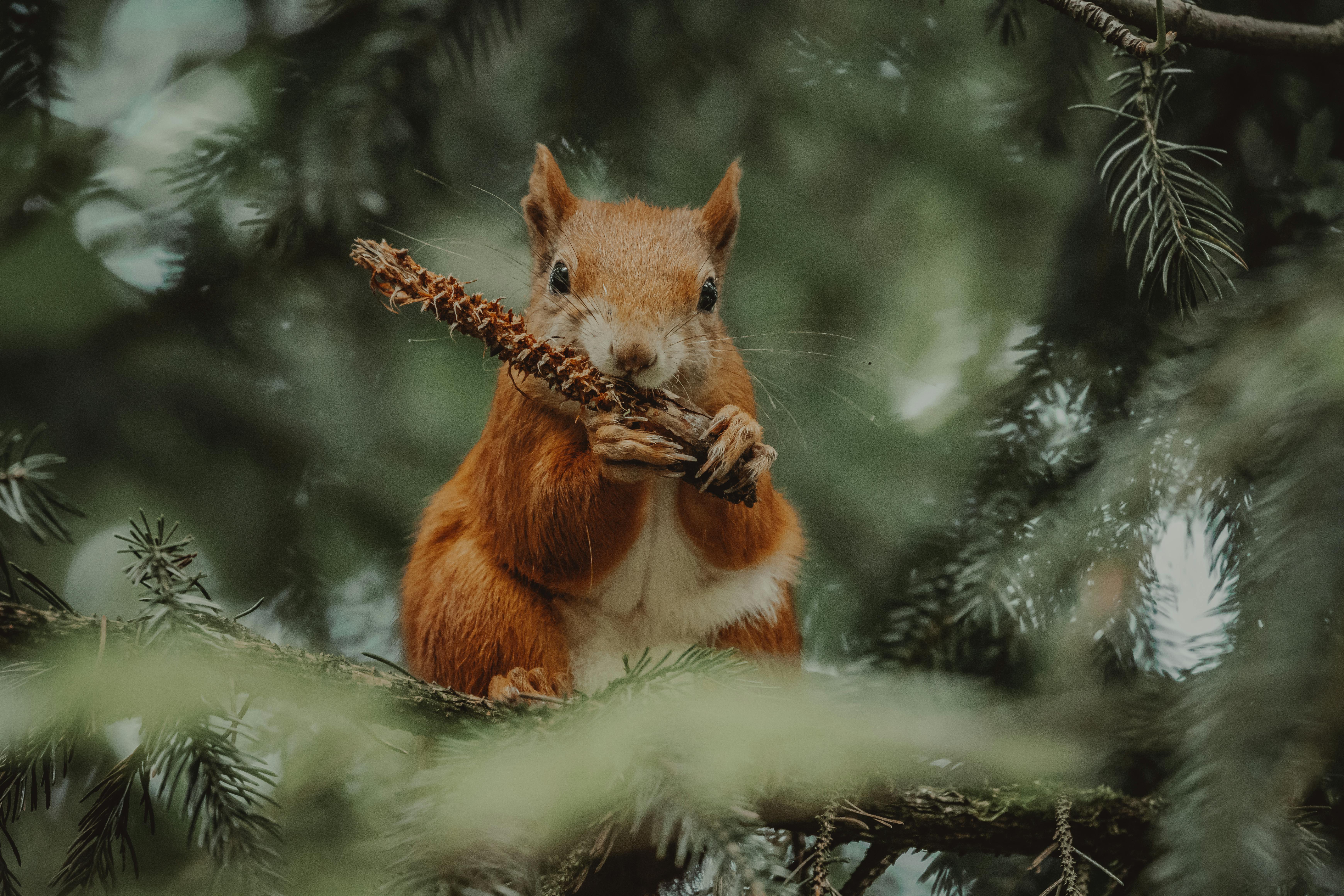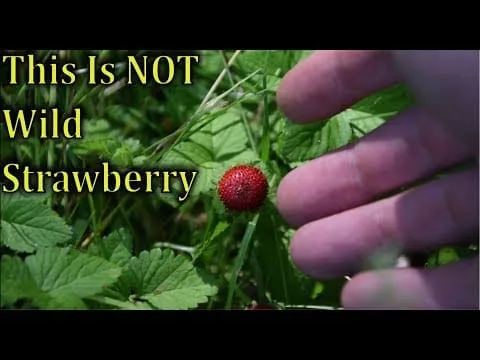Wild strawberries are a delicious treat that can be picked and eaten in the wild. They are a great way to enjoy nature and add some flavor to your outdoor experience. With their sweet taste, they can be added to salads, jams, desserts, or just eaten as a snack. While many people enjoy eating wild strawberries for their flavor and convenience, it is important to make sure they are safe to eat before digging in. In this article, we will discuss what you need to know about eating wild strawberries and how to make sure they are safe for consumption.Yes, wild strawberries are safe to eat. They are a nutritious fruit that can be eaten raw or cooked. They can also be used in jams, pies, smoothies, and other recipes. Wild strawberries are often sweeter than cultivated varieties and can have a range of flavors from tart to sweet.
Nutritional Benefits of Wild Strawberries
Wild strawberries are a nutritious and delicious treat that can be enjoyed in a variety of ways. They are an excellent source of fiber, antioxidants, vitamins, and minerals. They are also low in calories and fat, making them a healthy snack option. Wild strawberries are packed with essential nutrients such as Vitamin C, Vitamin K, magnesium, potassium, and manganese. Additionally, they contain several phytonutrients that may help reduce inflammation and protect against chronic diseases.
The antioxidants found in wild strawberries can help fight free radicals in the body and prevent cell damage. By doing so, they can help reduce the risk of certain cancers and other chronic diseases. Furthermore, wild strawberries contain high levels of ellagic acid which is thought to have anti-carcinogenic properties. The vitamin C content of wild strawberries is also beneficial for boosting immunity and helping to keep the skin healthy and youthful looking.
Wild strawberries are also a good source of dietary fiber which can help promote regularity and reduce cholesterol levels in the body. In addition to their nutritional benefits, wild strawberries have been used for their medicinal properties for centuries. They have been used to treat digestive disorders such as diarrhea and constipation as well as skin conditions such as eczema or psoriasis.
Overall, wild strawberries offer numerous health benefits that make them an excellent addition to any diet. They are low in calories but packed with essential vitamins and minerals that can help boost immunity, reduce inflammation, protect against chronic diseases, promote regularity, and keep the skin healthy looking. So why not give wild strawberries a try?
How to Identify Wild Strawberries
Identifying wild strawberries is a great way to enjoy the fruits of the wild. The trees that produce these berries are found in all parts of the world, and they have a variety of colors and shapes. While each species of strawberry has its own unique characteristics, there are some general tips that can help you identify them in the wild.
The first thing to look for when identifying wild strawberries is their size. Most varieties range between one-half inch and two inches in diameter, though some may be larger or smaller. The berries should be round or slightly conical in shape with five distinct sepals at the top. When ripe, they will usually be a bright red color with small seeds on the surface. If you’re unsure whether or not a strawberry is ripe, try gently squeezing it; if it gives slightly, it’s probably ready to eat.
Another important characteristic of wild strawberries is their smell. When ripe, they will have a sweet aroma similar to a domestic variety but with more floral notes. If you’re having trouble finding any ripe berries, look for ones that have started to turn pink or amber in color; these may still be edible as long as they don’t smell sour or rotten.
Finally, examine the leaves of the strawberry plants for further identification clues. The leaves should be deep green and serrated along their edges; some varieties may also have white hairs on their undersides. If you see any white flowers growing near the plants, these are likely from the same species as well.
By keeping an eye out for these characteristics, you can easily identify wild strawberries in your area and enjoy their sweet flavor!
Where Can I Find Wild Strawberries?
Wild strawberries can be found in a variety of places, depending on the time of year and your location. In the spring and early summer, they can often be found in fields, meadows, and wooded areas. They may also be found growing along roadsides and in disturbed areas such as clearings or construction sites.
These wild strawberries are typically smaller than those you would find in grocery stores, but they are also much sweeter and packed with flavor. They can often be found growing in clusters of two or three plants, rather than just one. It’s important to note that wild strawberries should never be harvested from parks or other protected areas as this is illegal.
In addition to searching for wild strawberries outdoors, you can also purchase them from farmers markets or specialty produce stores. You may also be able to find them at local nurseries or even online. If you are unable to find fresh wild strawberries, there are also a variety of frozen, canned, and dried options available for purchase at most grocery stores.
No matter where you purchase your wild strawberries from, it’s important to make sure that they are fresh and free from any signs of spoilage before consuming them. Wild strawberries have a short shelf life so it’s best to use them up as soon as possible after purchasing them for the best tasting results!
Foraging for Wild Strawberries
Foraging for wild strawberries is an enjoyable activity that can be enjoyed by all ages. It’s a great way to spend time outdoors, get some exercise, and enjoy the fresh air. Plus, you get to enjoy the deliciousness of wild strawberries! When foraging for wild strawberries, it’s important to know where and when to look for them. Wild strawberries are found in the early spring and summer months in meadows, fields, and wooded areas. When looking for them, be sure to look in places that have plenty of sunlight and good soil drainage.
It’s also important to know how to identify wild strawberries so you don’t pick something else by mistake. Wild strawberries have a distinctive heart-shaped leaf with three leaflets and white or pink flowers. The ripe berries are usually bright red in color and slightly smaller than cultivated varieties.
When picking wild strawberries, it’s best to avoid picking from areas near roads or highways where they may have been exposed to pollutants or chemicals. Also make sure you don’t pick too many as this can damage the plant and reduce its ability to spread its seeds. Once you’ve picked your berries, it’s important to store them properly so they remain fresh and delicious for as long as possible. Try keeping them in a shallow container lined with damp paper towels or cloths so they don’t dry out too quickly.
Foraging for wild strawberries can be a fun activity that yields sweet rewards! With the proper knowledge on where and when to look for them as well as how to properly store them, you can enjoy delicious wild strawberries throughout the season.

Cleaning and Preparing Wild Strawberries
Wild strawberries, also known as woodland strawberries, are small and sweet. They can be found in wooded areas, meadows, and along roadsides. Though delicious, wild strawberries are often covered in dirt that needs to be removed before you can enjoy them. Preparing wild strawberries is easy and only takes a few minutes of your time.
Begin by rinsing the berries off with cool water to remove any dirt or debris. Be sure not to use too much water as this can damage the delicate skin of the fruit. If the berries are very gritty, you may need to gently scrub them with a soft brush or cloth to help remove any stubborn dirt.
Once cleaned, you will need to remove the stems from the berries. This can be done by using small scissors or a paring knife to cut off the top of each berry where the stem attaches. Make sure to discard any stems that may have gotten mixed in with your berries as they can be bitter tasting.
Finally, it is important to examine each berry for signs of mold or spoilage before consuming them. Discard any fruit that looks discolored or has visible signs of mold on it. Wild strawberries should be eaten as soon as possible after picking for best flavor and freshness. Enjoy your freshly prepared wild strawberries!
How to Store Wild Strawberries
Storing wild strawberries is a great way to enjoy them year-round. With proper storage, you can enjoy the sweet, juicy taste of wild strawberries for months. Here are some tips on how to store your wild strawberries:
Firstly, pick your strawberries when they are ripe and at their peak of freshness. Unripe or overripe berries will not last as long and may spoil quickly. If you can’t use the berries immediately after picking, store them in the refrigerator until you’re ready to eat or cook with them.
Secondly, wash the berries thoroughly in cold water before storing them. This will help remove dirt and other contaminants that could spoil the berries faster. Make sure they are completely dry before storing them.
Thirdly, place the clean and dry berries in an airtight container with a lid. A plastic container or zippered bag is best. This will keep out any moisture and keep your berries fresh for longer.
Lastly, store the container in the refrigerator as soon as possible after picking. The colder environment helps keep your berries fresh for much longer than if they were stored at room temperature. Make sure to check on your strawberries regularly to ensure they’re still fresh and haven’t gone bad.
By following these simple steps, you can enjoy delicious wild strawberries all year round!
Cooking with Wild Strawberries
Wild strawberries are a delicious and versatile ingredient to use in cooking. They can be used to make a variety of dishes, from salads to desserts and everything in between. Whether you pick them yourself or purchase them from the store, wild strawberries are packed with flavor and nutrition.
When cooking with wild strawberries, it is important to know the best way to prepare them. The most popular way is to simply wash and eat them fresh, but they can also be cooked, stewed, or dried. If you’re looking for a quick and easy way to add some sweetness to a dish, try adding some chopped wild strawberries into your favorite recipe.
When using wild strawberries in recipes, remember that they are much smaller than regular strawberries so they may need a longer cooking time. They also have a unique flavor that is best appreciated when cooked properly. For this reason, it’s important to use milder spices when cooking with wild strawberries as strong flavors can overpower their delicate taste.
Another great thing about cooking with wild strawberries is that they contain more antioxidants than regular store-bought varieties which makes them even healthier for you. Also, because of their smaller size they are easier to incorporate into recipes without having large chunks of fruit in the dish like you would get with regular-sized berries.
No matter what type of dish you are creating, adding wild strawberries is sure to give it an extra boost of flavor and nutrition. Whether you decide to eat them raw or add them into your favorite recipes, these little fruits are sure to liven up any meal!

Conclusion
Wild strawberries are not only tasty and nutritious, but they can also provide a unique experience in the outdoors. Foraging for wild strawberries can be a great way to get out in nature and spend time with friends and family. Wild strawberries are safe to eat, but it is important to make sure that you are harvesting them from an area that has not been sprayed with chemicals or exposed to contamination. It is also important to note that wild strawberries may be smaller than store-bought varieties, and they may have a different flavor.
Overall, wild strawberries can be a great addition to any diet. They can provide nutrition as well as a unique outdoor experience. Whether you pick them yourself or purchase them from a local farm, adding wild strawberries to your diet can be an enjoyable and healthful experience.



